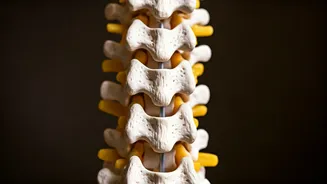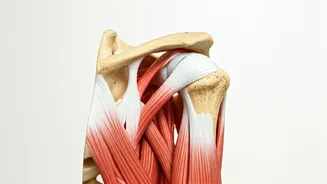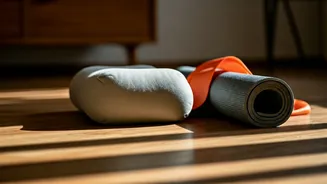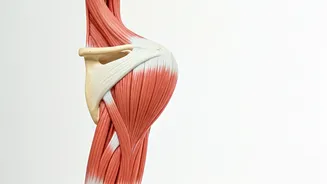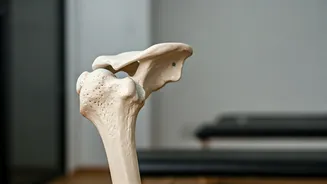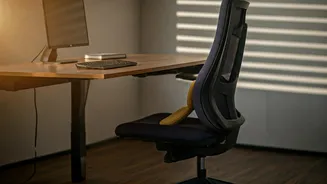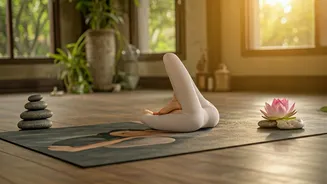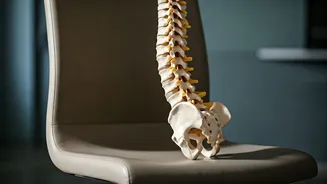Cat-Cow Stretch
The Cat-Cow stretch is a gentle yoga pose that enhances spinal flexibility and massages the abdominal organs. To begin, position yourself on your hands
and knees, ensuring your wrists are aligned under your shoulders and your knees beneath your hips. For the Cat pose, round your spine toward the ceiling, tucking your chin to your chest while gently engaging your abdominal muscles. Imagine you're drawing your belly button towards your spine. Transition to the Cow pose by arching your back, dropping your belly towards the floor, and lifting your chest and gaze towards the ceiling. Feel the stretch in your lower back. Repeat these movements, flowing between the Cat and Cow poses, for approximately 10-15 repetitions. This flowing sequence promotes spinal mobility and can relieve back stiffness, helping to improve your posture and reduce stress.
Flexion-Rotation Stretch
This stretch combines flexion (bending forward) and rotation (twisting) to target lower back muscles. Lie on your back with your knees bent and feet flat on the floor. Extend your arms out to the sides, creating a 'T' shape. Keeping your shoulders flat on the ground, gently drop both knees to one side, twisting your spine. Hold this position for about 20-30 seconds, feeling the stretch in your lower back and obliques. Return to the starting position and repeat on the other side. Aim for 2-3 repetitions on each side. The flexion-rotation stretch can help loosen tight muscles and increase range of motion, alleviating pain and promoting spinal health. It's especially beneficial for those who sit for long periods or engage in repetitive movements.
Trunk Rotation Exercise
The trunk (spinal) rotation exercise is another effective way to mobilize the spine and improve lower back health. You can perform this stretch while standing or sitting. If standing, keep your feet shoulder-width apart and your knees slightly bent. Place your hands on your hips. Gently rotate your upper body to one side, keeping your hips relatively still. Hold the rotation for a few seconds, feeling the stretch in your lower back and obliques. Return to the center and repeat on the other side. If sitting, sit upright in a chair with your feet flat on the floor. Place your hands on your thighs and gently twist your upper body, looking over your shoulder. Hold the stretch and repeat on the other side. This exercise improves spinal flexibility and can alleviate stiffness and pain by increasing circulation in the back muscles.
Pelvic Tilt Technique
The pelvic tilt is a simple exercise that can strengthen abdominal muscles and improve posture, thereby reducing lower back pain. Lie on your back with your knees bent and your feet flat on the floor. Your lower back should have a slight natural curve. To begin, gently tilt your pelvis backwards, pressing your lower back into the floor. This action engages your abdominal muscles and flattens your lower back. Hold this position for a few seconds, then release. Next, tilt your pelvis forward, allowing a small arch to form in your lower back. Hold this position and then release. Alternate between these two movements, focusing on the feeling in your lower back and abdomen. Perform this exercise for about 10-15 repetitions. Pelvic tilts enhance core stability and can reduce strain on the lower back by supporting proper spinal alignment.
Knee-to-Chest Stretch
The knee-to-chest stretch is a relaxing exercise that gently stretches the lower back and hamstrings. Lie on your back with your knees bent and your feet flat on the floor. Gently bring one knee towards your chest, clasping your hands around your shin. Gently pull your knee closer to your chest, feeling the stretch in your lower back. Hold this position for about 20-30 seconds. Release and repeat with the other leg. You can also perform this stretch with both knees, bringing both knees towards your chest and hugging them. This variation deepens the stretch. Perform 2-3 repetitions on each leg, or with both legs together. This stretch helps relieve pressure on the spine and can relax tight muscles in the lower back and hips, improving flexibility and pain relief.
Supported Bridge Pose
The supported bridge pose is a modified version of the bridge pose that provides a gentle stretch for the back while also strengthening core muscles. Lie on your back with your knees bent and your feet flat on the floor, hip-width apart. Place a yoga block or a thick pillow under your lower back, at the level of your sacrum (the triangular bone at the base of your spine). Your back should be supported by the block, allowing your spine to gently extend. You can keep your arms at your sides, palms facing down, for stability. Hold the pose for about 30-60 seconds, focusing on breathing deeply. The supported bridge helps to gently stretch the spine and open the chest, improving posture. It helps strengthen the back and abdominal muscles, reducing strain on the lower back.
Child's Pose Benefits
Child's pose, or Balasana, is a restful yoga posture that gently stretches the lower back, hips, and thighs while calming the mind. Start by kneeling on the floor, with your knees hip-width apart (or wider if you feel more comfortable). Bring your big toes together. Gently lean forward, resting your torso on your thighs. Extend your arms forward, palms down on the floor, or rest your arms alongside your body. Allow your forehead to touch the floor. Close your eyes and breathe deeply. Hold the pose for several breaths, allowing your body to relax and your back to gently stretch. Child's pose helps to release tension in the lower back and can calm the nervous system, reducing stress and promoting relaxation. It's a great pose to include in a stretching routine.
Seated Hamstring Stretch
The seated hamstring stretch can indirectly help relieve lower back pain by stretching the hamstrings, which are connected to the pelvis and can influence lower back tension. Sit on the floor with your legs extended straight out in front of you. Sit upright with a straight back. Inhale and reach your arms up towards the ceiling. Exhale and slowly lean forward from your hips, aiming to reach for your toes. It is perfectly fine if you can't reach your toes – just go as far as you comfortably can while keeping your back as straight as possible. If you can, hold your feet or ankles. Feel the stretch in the back of your legs (hamstrings). Hold the stretch for about 20-30 seconds. Then, slowly return to the upright position. This helps improve hamstring flexibility, easing the strain on the lower back and promoting a healthy posture. Repeat the stretch for a few rounds, focusing on slow and deep breaths.
